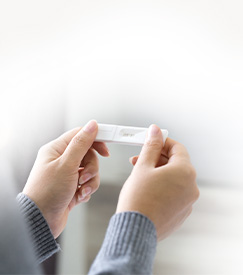
There have been many changes to social attitudes over the years regarding adoption, seeing it become more common and acceptable within society. As such, many types of adoption are available for expectant mothers. Recent trends have seen an increase in the popularity of open adoption, but not every mother finds this type of adoption comfortable.
Adoption can be a tough decision for any mother to make, and anyone thinking about it is bound to have lots of questions about the process. In this article we’ll discuss the differences between open and closed adoption, helping you make an informed decision about your future and the future of your child.
What are the Differences Between Open and Closed Adoption?
Adoptions begin when a mother chooses to place her child for adoption. However, this can be a very difficult decision to reach for many women. The thought of never having contact with their child again can be painful, so by opting for an open adoption, they’re able to maintain varying degrees of contact and communication with their child, such as through letters and photographs.
Closed adoptions are different, as once a mother has chosen to place her child for adoption, they will no longer have any contact with their child. Open adoption is becoming more and more common as attitudes towards the process of adoption change, but it is still important to recognize that open adoption is not always possible or preferable. For some women, the clean break of a closed adoption is what they need to move on with their lives.
How do They Work?
The challenging circumstances surrounding a child’s conception, the personal circumstances of a mother, or even the social attitudes that are attached to pregnancy in a number of communities, can all have an impact on the decisions a mother makes when she is considering placing her child for adoption. In the past, closed adoption would be a very basic process. A mother would choose to put her child up for adoption, contact a suitable agency, have their child, and then their child will be immediately placed with a new family via an agency representative. However as times and attitudes towards adoption have changed, so has much of the process.
It’s a common belief that once a mother chooses a closed adoption, she relinquishes all control over her child’s future. This isn’t always the case. She may allow others to make all of her decisions, but often the mother is still able to choose where her child goes, even if she never meets the future adoptive parents.
Any future contact between the birth mother and child is limited, if at all. But circumstances can often change for both mother and child, and so even in closed adoptions, access between birth parents and adoptive families is still important, such as if a birth mother finds she has a medical condition later in life. She can contact the adoption agency to forward the information to the adoptive family.
The Right Decision for You
Closed adoptions allow for privacy for birth mothers, especially for those who want to place their children up for adoption, and then move on from this chapter in their lives with a sense of closure. It’s a difficult process, both physically and emotionally, but there’s a lot of support out there for you to make the decision that’s right for you.






